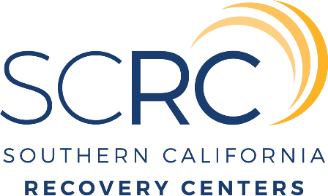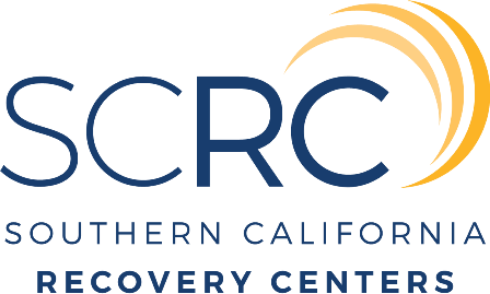Understanding Opioids
Introduction to Opioids
Opioids are a class of drugs naturally found in the opium poppy plant. Some opioids are made directly from the plant, while others, like fentanyl, are synthesized in labs. These substances are well-known for their pain-relieving properties, making them valuable in healthcare for treating acute and chronic pain. However, their potent effects on the brain’s reward system also make them highly addictive, leading to widespread misuse and addiction. Opioids can induce feelings of euphoria, providing a temporary escape from physical or emotional discomfort, but at a high cost to the individual’s health and well-being.
The Rise of Opioid Addiction
The opioid crisis, a major public health emergency, has escalated over the years due to the overprescription of opioid medications and the proliferation of potent synthetic opioids like fentanyl. This crisis has been marked by an alarming increase in opioid overdose deaths and significant social and economic burdens. The addictive properties of opioids, combined with their widespread availability, have led to a dramatic increase in misuse and dependency. This epidemic has touched the lives of countless individuals and families across all socio-economic backgrounds, underscoring the critical need for effective opioid addiction treatment solutions in Southern California and beyond.
Different Types of Opioids
Opioids are not a one-size-fits-all class of drugs. There are several types, ranging from prescription medications like morphine and oxycodone to illicit drugs like heroin. Prescription opioids are commonly used for pain relief but can lead to addiction if not used properly. Fentanyl, a synthetic opioid, is up to 50 times stronger than heroin and has become notorious for its role in the opioid epidemic due to its high potency and lethal potential in small doses. On the other hand, heroin, derived from morphine, is an illegal opioid known for its euphoric effects and high risk of addiction and overdose. These variations among opioids necessitate tailored approaches to treatment and recovery.
What is Fentanyl
Definition and Origins
Fentanyl is a synthetic opioid that is significantly more potent than many other opioids, including heroin. It was first synthesized in 1960 and has since found widespread use in medical settings as a powerful pain reliever and anesthetic. Due to its extreme potency, fentanyl is measured in micrograms, with a standard dose being just a fraction of the amount of heroin or prescription painkillers considered safe for consumption. However, its potency also means that fentanyl carries a high risk of overdose, especially when used outside a controlled medical environment or when mixed with other substances. This drug has unfortunately found its way onto the streets, where it is often added to heroin or sold as counterfeit pills, significantly increasing the risk of overdose due to its powerful effects.
Effects of Fentanyl
The effects of fentanyl are similar to those of heroin, including euphoria, relaxation, pain relief, and sedation. However, because fentanyl is much stronger, its effects are more intense and can occur at much smaller doses. This intensity also means that the risk of overdose is much higher, as individuals may not realize how much fentanyl they are consuming, especially if it has been mixed with other substances. Symptoms of fentanyl overdose include pinpoint pupils, cold and clammy skin, cyanosis (bluish tint to the skin and lips), respiratory depression, and potentially death if not treated immediately. The potency and risk associated with fentanyl underscore the importance of understanding its addictive properties.
Fentanyl Treatment Solutions at Southern California Recovery Centers
Southern California Recovery Centers (SCRC) offers comprehensive fentanyl treatment solutions that address both the physical and psychological aspects of addiction. SCRC understands the unique challenges posed by fentanyl, including its high potency and risk of overdose. Treatment begins with a medically supervised detoxification process to safely manage withdrawal symptoms, which can be particularly severe given fentanyl’s potency. Following detox, SCRC provides personalized medication treatments for substance dependency, utilizing the latest in pharmacotherapeutic approaches to mitigate cravings and stabilize the individual’s condition.
Therapy at SCRC includes individual and group sessions, focusing on underlying issues contributing to addiction, such as trauma or co-occurring mental health disorders. Innovative treatment methods, including EMDR (Eye Movement Desensitization and Reprocessing), Seeking Safety Therapy, and Somatic Experiencing, are part of the holistic treatment approach. SCRC’s comprehensive program aims to equip individuals with the tools they need for long-term recovery, including relapse prevention strategies, life skills training, and support for reintegration into everyday life.
What is Heroin
Heroin Overview
Heroin, derived from morphine, a natural substance taken from opium poppy plants, is a highly addictive and illegal opioid. Known by various names such as “smack,” “H,” and “dope,” heroin can be injected, snorted, or smoked, leading to rapid effects on the brain. It binds to opioid receptors on cells located in many areas of the brain, especially those involved with feelings of pain and pleasure, as well as controlling heart rate, sleeping, and breathing. Heroin’s allure lies in the intense euphoria it produces, but this comes at a devastating cost to the individual’s health and social standing. Understanding the important details on Heroin for awareness is crucial to comprehending its impact on individuals and communities.
Side Effects of Heroin
The side effects of heroin use are profound and can lead to both immediate and long-term health issues. Initially, users may experience a “rush” of pleasure, a warm flushing of the skin, heaviness in the extremities, and clouded mental functioning. Following this initial euphoria, users then typically experience drowsiness for several hours. The central nervous system’s depression can also lead to slowed heart rate and breathing, which can be fatal. Chronic use of heroin leads to devastating physical and psychological effects, including addiction, infectious diseases from needle sharing, and increased risk of overdose. The effects of heroin use on individuals detail the broad spectrum of repercussions stemming from heroin addiction.
Heroin Addiction Help at Southern California Recovery Centers
Southern California Recovery Centers (SCRC) acknowledges the complex challenges posed by heroin addiction and offers specialized help for heroin addiction near Dana Point. SCRC’s approach begins with a compassionate understanding of the individual’s journey, recognizing the profound grip of heroin addiction. The center provides a safe, supportive environment for detoxification, spearheading the recovery process with medical supervision to mitigate withdrawal symptoms effectively.
Following detox, SCRC’s program emphasizes personalized therapy to address the underlying causes of addiction, including but not limited to trauma, mental health issues, and life circumstances. The center incorporates a range of therapeutic modalities, from traditional 12-step programs to innovative treatments like EMDR and Seeking Safety, to cater to the diverse needs of its clients. SCRC’s dedication to a holistic recovery process underscores the center’s commitment to not only help individuals break free from heroin’s hold but also to empower them with the skills necessary for a fulfilling, sober life.
Comparing Fentanyl vs Heroin
Potency and Effects
When evaluating the differences between fentanyl and heroin, one of the most glaring disparities lies in their potency. Fentanyl, a synthetic opioid, is recognized for its extreme strength-approximately 50 to 100 times more powerful than morphine. This heightened potency means that even minuscule amounts of fentanyl can produce significant effects, ranging from intense euphoria to profound sedation and pain relief. In contrast, heroin, while still potent and capable of producing strong euphoric effects, requires a larger dose to achieve similar outcomes. This difference significantly impacts the risk profile of each substance, especially concerning overdose potential and the ease with which individuals can unintentionally consume lethal quantities. The comprehensive approach to recovery from substance abuse often starts with educating individuals on these critical differences and the unique challenges each substance presents.
Fentanyl Overdose Symptoms vs Heroin Use Consequences
The symptoms of a fentanyl overdose can rapidly escalate to life-threatening conditions, largely due to its profound potency. Individuals experiencing a fentanyl overdose may exhibit signs such as pinpoint pupils, severe respiratory depression, cyanosis, and unconsciousness. Due to fentanyl’s powerful effect on the respiratory system, overdoses can quickly lead to death if not treated immediately with interventions like naloxone, a medication that can reverse the effects of opioid overdose. Heroin use, on the other hand, also carries a high risk of overdose, with symptoms including slow breathing, extreme drowsiness, and muscle weakness. However, due to heroin’s lower potency compared to fentanyl, there may be a slightly longer window for intervention. Both scenarios underscore the urgent need for prompt medical attention but highlight the particularly stealthy and perilous nature of fentanyl overdose signs, including its rapid onset.
Treatment Approaches for Each Substance
The treatment for fentanyl and heroin addiction shares common foundations, including detoxification, counseling, and support groups, but there are notable distinctions in the approach due to the substances’ varying potencies. For fentanyl addiction, treatment may commence with a more rigorous detoxification process for drug addiction, given the substance’s strength and the severe withdrawal symptoms it can provoke. Medication-assisted treatment (MAT) is also a critical component, potentially involving higher or more carefully adjusted doses of medications like methadone or buprenorphine to manage withdrawal symptoms and cravings effectively.
Heroin addiction treatment, while also likely incorporating MAT, may focus more on long-term behavioral therapies and reintegration programs, given the differing psychological grip heroin can have on its users. For both substances, however, a personalized approach is vital. At Southern California Recovery Centers, personalized medication treatments for substance dependence are tailored to the unique situation of each individual, recognizing that recovery is a deeply personal journey that does not adhere to a one-size-fits-all model. This commitment to customization ensures that regardless of whether someone is battling fentanyl or heroin addiction, they receive the focused, effective care they need to navigate the path to recovery.
Substance Abuse Recovery
Detoxification Process
Detoxification is the crucial first step in the journey toward recovery from addiction, acting as the gateway to healing both the body and the mind. At Southern California Recovery Centers, the detoxification process for drug addiction is designed with an understanding that each individual’s experience with substances like fentanyl and heroin is unique. Medically supervised detox offers a safe and supportive environment where individuals can cleanse their bodies of substances under the careful watch of healthcare professionals. This phase is essential for managing withdrawal symptoms that can range from uncomfortable to life-threatening, depending on the substance and duration of use. Southern California Recovery Centers emphasize the importance of combining detox with comprehensive therapy to ensure that the detox is not only safe but also a launching pad for sustainable recovery.
Overcoming Drug Addiction
Overcoming drug addiction requires a multifaceted approach that addresses the physical, emotional, and psychological aspects of the disease. In Southern California, recovery centers like SCRC offer a range of Carlsbad drug rehabilitation programs that cater to the complex needs of individuals struggling with addiction. These programs incorporate personalized medication treatments for substance dependency, ensuring that recovery plans are tailored to the specifics of each person’s situation. By understanding the underlying causes of addiction, such as trauma or co-occurring mental health disorders, SCRC’s expert team can create a holistic treatment plan. This plan often includes therapy, group support, educational workshops, and relapse prevention strategies, all aimed at helping individuals develop the skills they need for long-term sobriety.
Relapse Prevention Strategies
The path to recovery from addiction is often marked by challenges, making the risk of relapse a significant concern. At Southern California Recovery Centers, the emphasis on relapse prevention strategies is a cornerstone of the comprehensive approach to treatment. These strategies include developing a thorough understanding of personal triggers, effective stress management techniques, and the importance of a strong support network. Clients are taught to recognize early warning signs of relapse and to implement coping strategies that support sobriety. Additionally, SCRC’s programs encourage participation in ongoing therapy and support groups, providing a community of understanding and accountability. Through diligent application of these strategies, individuals can build a resilient foundation for their recovery journey, significantly reducing the likelihood of relapse and fostering a life of health and wellness beyond addiction.
Southern California Recovery Center’s Comprehensive Approach
Personalized Drug Treatment Programs
At Southern California Recovery Centers, the focus is on providing personalized medication treatments for substance dependency that cater to the individual needs of each client. Recognizing that addiction is a deeply personal issue, the center designs its treatment programs around the specific circumstances, health status, and recovery goals of the people it serves. This approach ensures that whether someone is struggling with an addiction to fentanyl, heroin, alcohol, or prescription pills, they receive care that is thoughtfully aligned with their unique situation. The integration of personalized treatment plans not only enhances the effectiveness of recovery efforts but also reinforces the individual’s sense of dignity and self-worth throughout the healing process.
Innovative Treatment Services: EMDR, Seeking Safety Therapy, and Somatic Experiencing
Innovation is at the heart of the recovery services provided at Southern California Recovery Centers. The center employs a suite of cutting-edge treatment modalities including EMDR (Eye Movement Desensitization and Reprocessing), Seeking Safety Therapy, and Somatic Experiencing. These therapies are selected for their efficacy in addressing not just the symptoms of addiction, but the underlying emotional and psychological trauma that often contributes to substance misuse. EMDR, for example, is a powerful therapy for processing and healing from trauma, while Seeking Safety helps individuals develop coping skills to safely manage present and past trauma without resorting to substance use. Somatic Experiencing offers a body-oriented approach to healing trauma and other stress disorders. This comprehensive array of innovative treatments reflects the center’s commitment to holistic recovery, recognizing that true healing encompasses mind, body, and spirit.
Support for Various Demographics: Veterans, Active Duty Military, CEOs, Young Adults
Understanding the diverse needs of its clients, Southern California Recovery Centers provide specialized support for various demographics, including veterans, active duty military, CEOs, and young adults facing unique life challenges. The center’s veteran-centered treatment for substance misuse in Southern California is tailored to address the distinct experiences and stressors faced by those who have served in the military, offering a compassionate pathway to recovery that acknowledges their service and sacrifices. For CEOs and other high-level professionals, the center provides confidential, executive-friendly programs that accommodate their schedules and privacy needs, allowing them to seek treatment without stepping away from their responsibilities. Young adults, including those experiencing “failure to launch” syndrome, find support through programs designed to address the specific pressures and challenges of transitioning into adulthood. This wide-ranging support underscores Southern California Recovery Centers’ dedication to meeting clients where they are, providing targeted assistance that fosters healing and growth for individuals from all walks of life.
Concluding Thoughts
Understanding Drug Addiction
Drug addiction, whether to substances like fentanyl or heroin, presents a complex challenge that extends beyond the physical dependency to engage psychological, social, and emotional factors. Understanding general addiction issues is the first step toward addressing this multifaceted health concern. Addiction is not a choice or a failure of willpower but a chronic disease that affects the brain’s structure and function, leading to an inability to control drug use despite harmful consequences. Education on addiction’s nature, recognizing it as a medical condition requiring a comprehensive treatment approach, is essential. Equipped with this understanding, individuals struggling with addiction, and their loved ones, can begin to seek the necessary help for recovery and healing.
The Importance of Choosing the Right Recovery Center
Selecting the right recovery center is paramount to an individual’s success in overcoming addiction. The right center offers a blend of tailored treatment programs, an experienced and compassionate staff, and an environment conducive to healing. Southern California Recovery Centers stands out by offering specialized services catering to diverse needs, including alcohol and drug treatment, with a focus on individual care plans. These care plans incorporate innovative treatment services such as EMDR, Seeking Safety Therapy, and Somatic Experiencing to address not just the addiction but also the underlying emotional and psychological trauma. Moreover, the importance of choosing a center like SCRC lies in its commitment to providing targeted support for various demographics, recognizing that each client’s journey to recovery is unique.
Continued Support and Alumni Program
Recovery does not end upon completing a treatment program; it’s an ongoing process that requires continuous support and resources. Southern California Recovery Centers underscore the value of post-treatment through their robust alumni program. This program fosters a community of individuals who share similar journeys, offering mutual encouragement and support long after formal treatment ends. For more information on our support programs, visit our Alumni Program at Southern California Recovery Centers. The continuation of care through alumni networks, ongoing therapy sessions, and recovery coaching for individuals suffering from addiction, helps to solidify the lifestyle changes initiated during treatment. Such support is instrumental in reducing the likelihood of relapse, arming individuals with the tools, confidence, and community backing needed to navigate the challenges of sustained sobriety. SCRC’s commitment to their clients’ long-term well-being through these programs exemplifies the critical role of continued support in the lasting recovery from addiction.
In conclusion, the path from addiction to recovery is fraught with challenges, yet with the right understanding, treatment center, and ongoing support, sustainable recovery is achievable. Southern California Recovery Centers embody this holistic approach, from initial treatment and personalized drug therapy options to recovery coaching and alumni support, ensuring that every individual has the resources and support necessary to face life post-addiction with resilience and hope.
Frequently Asked Questions
Question: What are the main differences in potency and effects between fentanyl and heroin as discussed in “The Difference Between Fentanyl and Heroin” blog post?
Answer: The key difference between fentanyl and heroin lies in their potency and effects on the body. Fentanyl, a synthetic opioid, is estimated to be 50 to 100 times more potent than morphine, making it significantly stronger than heroin, which is derived from morphine. Due to this elevated potency, fentanyl produces more intense effects at much smaller doses. These effects include euphoria, pain relief, and sedation but also carry a higher risk of overdose and severe withdrawal symptoms. Southern California Recovery Centers offers specialized opioid addiction treatment programs that cater to the unique challenges posed by both fentanyl and heroin abuse, including comprehensive detoxification processes and personalized substance dependency therapy to manage and mitigate these powerful effects and support recovery.
Question: How do Southern California Recovery Centers provide support for individuals dealing with fentanyl overdose symptoms or heroin withdrawal?
Answer: Southern California Recovery Centers address the dire needs of individuals experiencing fentanyl overdose symptoms or heroin withdrawal through immediate, medically supervised detoxification services. Recognizing the life-threatening nature of these conditions, especially with fentanyl’s potent risk, our Dana Point recovery center and Carlsbad drug treatment programs are equipped to manage severe respiratory depression and other critical symptoms efficiently. Post-detox, we offer personalized medication treatments for substance dependency and employ a host of innovative psychological therapies like EMDR and Seeking Safety Therapy to address underlying issues contributing to addiction. Our comprehensive recovery approach integrates relapse prevention strategies, cementing a foundation for lasting substance abuse recovery.
Question: In the context of your blog “The Difference Between Fentanyl and Heroin,” how does understanding these distinctions inform the treatment programs at Southern California Recovery Centers?
Answer: Understanding the distinctions between fentanyl and heroin is crucial for developing effective treatment programs. At Southern California Recovery Centers, this knowledge informs our personalized drug treatment protocols, acknowledging fentanyl’s high potency requires more intensive care during detoxification and may necessitate higher or more precisely adjusted doses of medication-assisted treatment (MAT). For heroin addiction, while the approach also includes MAT, there’s a strong emphasis on long-term behavioral therapies and life skills training to tackle the psychological dependency. This nuanced understanding allows us to tailor our strategies within our Dana Point recovery center and Carlsbad drug treatment programs, ensuring that each individual receives optimal support for overcoming drug addiction specifically tailored to the substance they’re recovering from.
Question: Considering the opioid epidemic’s impact, how do Southern California Recovery Centers’ programs contribute to solutions, especially in South California?
Answer: Southern California Recovery Centers play a pivotal role in tackling the opioid epidemic by offering comprehensive fentanyl treatment solutions and heroin addiction help, directly addressing two of the most challenging aspects of this crisis. Our programs in South California, including in areas like Dana Point and Carlsbad, are designed to meet the surge in opioid addiction head-on, providing specialized detoxification processes, evidence-based treatment modalities, and extensive aftercare support. We contribute to solutions by not only treating individuals but also educating communities on the dangers of opioid misuse, the signs of fentanyl abuse and heroin use consequences, and promoting healthier ways to manage pain and mental health issues. Our efforts extend beyond immediate recovery, focusing on long-term sobriety and relapse prevention strategies, highlighting our commitment to a comprehensive recovery approach for battling the opioid epidemic in Southern California and beyond.
Question: What unique challenges do veterans and active duty military face with opioid addiction, and how do Southern California Recovery Centers cater to their needs?
Answer: Veterans and active duty military personnel face unique challenges in opioid addiction, including higher rates of PTSD, chronic pain, and, unfortunately, a greater stigma around seeking help. Southern California Recovery Centers provide specialized veteran-centered treatment for substance misuse in Southern California. Southern California Recovery Centers understand these complexities and offer specialized programs tailored to the needs of veterans and active military, emphasizing confidentiality, compassion, and a respectful understanding of their service. Our treatment includes personalized drug treatment programs that incorporate modalities such as EMDR for PTSD, pain management alternatives to opioids, and dedicated support groups to foster community and mutual understanding. By addressing both the psychological and physical aspects of addiction and providing a pathway to recovery that respects their unique circumstances, we strive to ease their transition into sobriety, underscoring our commitment to serving those who’ve served our country.





